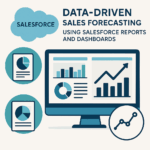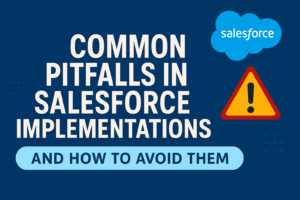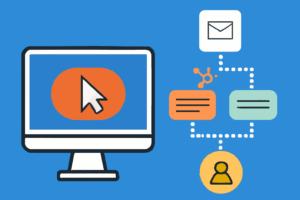BLOG
How To Get More Personal With Your Property Audience
Personalisation is key to creating meaningful connections with your audience in the property market. By tailoring your marketing efforts to individual preferences and behaviours, you can enhance engagement, improve customer satisfaction, and drive conversions.
But how do you achieve this? Let’s dive into some effective techniques that can help you connect with your property audience on a deeper level.
Customer segmentation techniques
Understanding your audience is the first step in creating a personalised experience. Customer segmentation is all about dividing your audience into distinct groups based on specific criteria. This allows you to tailor your marketing efforts to meet the unique needs of each segment.
Customer segmentation models
- Demographic segmentation: This is the most common form of segmentation. It involves dividing your audience based on age, gender, income, education level, and more. For example, first-time homebuyers might have different needs compared to retirees looking to downsize.
- Geographic segmentation: Where your audience lives can greatly influence their property needs, urban buyers might be looking for apartments close to public transport, while those in rural areas might prefer larger properties with more land.
- Behavioural segmentation: This involves segmenting your audience based on their behaviour, such as past purchases, browsing history, and engagement levels. Understanding these behaviours can help you predict what properties they might be interested in.
What are the best practices for targeting the right audience?
- Determine Goals and Variables: Identify the primary objectives of your segmentation strategy, such as increasing property viewings or improving lead quality. Choose variables that are most relevant to these goals, such as demographics, behaviours, or psychographics.
- Collect and Analyse Data: Gather data from various sources, including CRM tools, property inquiry forms, and online engagement metrics. This comprehensive data collection helps in creating accurate and actionable segments.
- Use Machine Learning: Implement machine learning algorithms to automate segmentation and uncover patterns that might not be evident through manual analysis. This also improves the precision and scalability of your segmentation efforts.
- Make Segments Easy to Use: Ensure that the segments created are easily accessible and usable by your sales and marketing teams. Simplify the segments to make them relevant and actionable for targeted property marketing campaigns.
- Run Regular Analyses: Regularly review and analyse the performance of your segments to ensure they remain relevant. Adjust segments as needed based on changes in market trends and customer behaviour.
Personalised email campaigns

Once you’ve segmented your audience, it’s time to engage them with personalised email campaigns. Emails are a powerful tool for property marketing, and personalisation can significantly boost their effectiveness.
Personalised email strategies to boost engagement:
- Use the recipient’s name: Personalise emails by addressing potential buyers or tenants by their first name in the subject line and greeting. This simple touch can significantly increase open rates and make your communication feel more personal.
- Segment your audience: Tailor email content to different segments of your audience based on their property preferences, budget, and location. This ensures that each recipient gets content relevant to their needs.
- Customise content: Personalise email content based on past interactions, such as properties viewed or inquiries made, to provide relevant recommendations and updates on similar listings.
- Use dynamic content: Employ dynamic content blocks to show different property listings and market information to different recipients within the same email, based on their preferences or demographics.
What are the practices for email marketing success?
- Collect comprehensive data: Use CRM systems and email marketing tools to collect detailed information about your customers’ preferences, past interactions, and purchase history.
- A/B testing: Regularly conduct A/B tests on different elements of your emails, such as subject lines, content, and send times, to determine what resonates best with your audience.
- Monitor performance metrics: Track key metrics like open rates, click-through rates, and conversion rates to gauge the effectiveness of your email campaigns and make necessary adjustments.
- Automate where possible: Use email marketing automation tools to send triggered emails based on specific actions or events, ensuring timely and relevant communication.
Dynamic website content customisation

Your website is often the first point of contact for potential buyers. Customising the content they see can create a more engaging and relevant experience.
Personalised property recommendations
Use browsing history and preferences to show visitors properties that match their interests. This can make their search more efficient and enjoyable.
Custom landing pages
Create landing pages tailored to different audience segments. For example, a landing page for investors might focus on properties with high rental yields, while a page for families might highlight homes near good schools.
Interactive tools
Include interactive tools like mortgage calculators, neighbourhood guides, and virtual tours. These tools can provide valuable information and keep visitors engaged.
AI-Powered personalisation tools

Artificial Intelligence (AI) can take your personalisation efforts to the next level. AI-powered tools can analyse vast amounts of data and provide insights that would be difficult to obtain manually.
Chatbots
AI chatbots can provide personalised assistance to website visitors. They can answer questions, recommend properties, and even schedule viewings, all based on user interactions.
Predictive analytics
AI can analyse past behaviours to predict future actions. This can help you anticipate what properties a user might be interested in and tailor your marketing efforts accordingly.
Content personalisation
AI can dynamically adjust the content displayed on your website based on user data. This ensures that each visitor sees the most relevant information, improving their overall experience.
Measuring personalisation effectiveness
It’s essential to measure the effectiveness of your personalisation strategies to ensure they are working as intended. Here are some key metrics to consider:
Techniques to measure the success of personalisation in property marketing
- Conversion Rate: Track the percentage of visitors who take desired actions, such as scheduling a property viewing or contacting an agent, to gauge the effectiveness of your personalisation efforts.
- New vs. Returning Visitors: Analyse how personalisation impacts new versus returning visitors to understand its effect on client loyalty and repeat inquiries.
- Engagement Metrics: Monitor metrics such as click-through rates on property listings, average session duration, and engagement scores to measure how well your personalised content resonates with your audience.
- Revenue Metrics: Track metrics like the average order value of rental or sale agreements and revenue per visit to assess the financial impact of your personalisation strategies.
Best practices to optimise personalisation in real estate
- Define clear objectives: Establish clear goals for your personalisation efforts, such as increasing property viewings, improving lead quality, or enhancing client satisfaction.
- Select relevant KPIs: Choose key performance indicators (KPIs) that align with your objectives and are quantifiable, such as conversion rates, engagement scores, and client loyalty metrics.
- Use benchmarks: Establish benchmarks before starting a personalisation campaign to measure progress and performance effectively.
- Integrate data sources: Combine data from various systems, such as your CRM and property management tools, to get a holistic view of personalisation effectiveness.
Ready to build deeper connections with your property audience?
Optimising your property marketing to meet the unique needs of your audience sets you apart in a crowded market. When you understand and address the specific preferences and interests of potential buyers and tenants, you create an experience that feels personal and relevant. This connection fosters trust and engagement, ultimately leading to higher conversion rates and long-term loyalty.
At Social Garden, we specialise in lead generation, conversion rate optimisation, and advanced personalisation techniques specifically designed for the property market. Let us help you transform your marketing strategy and achieve outstanding results.
Ready to get started? Contact us today and see how we can support your success in the real estate industry.











